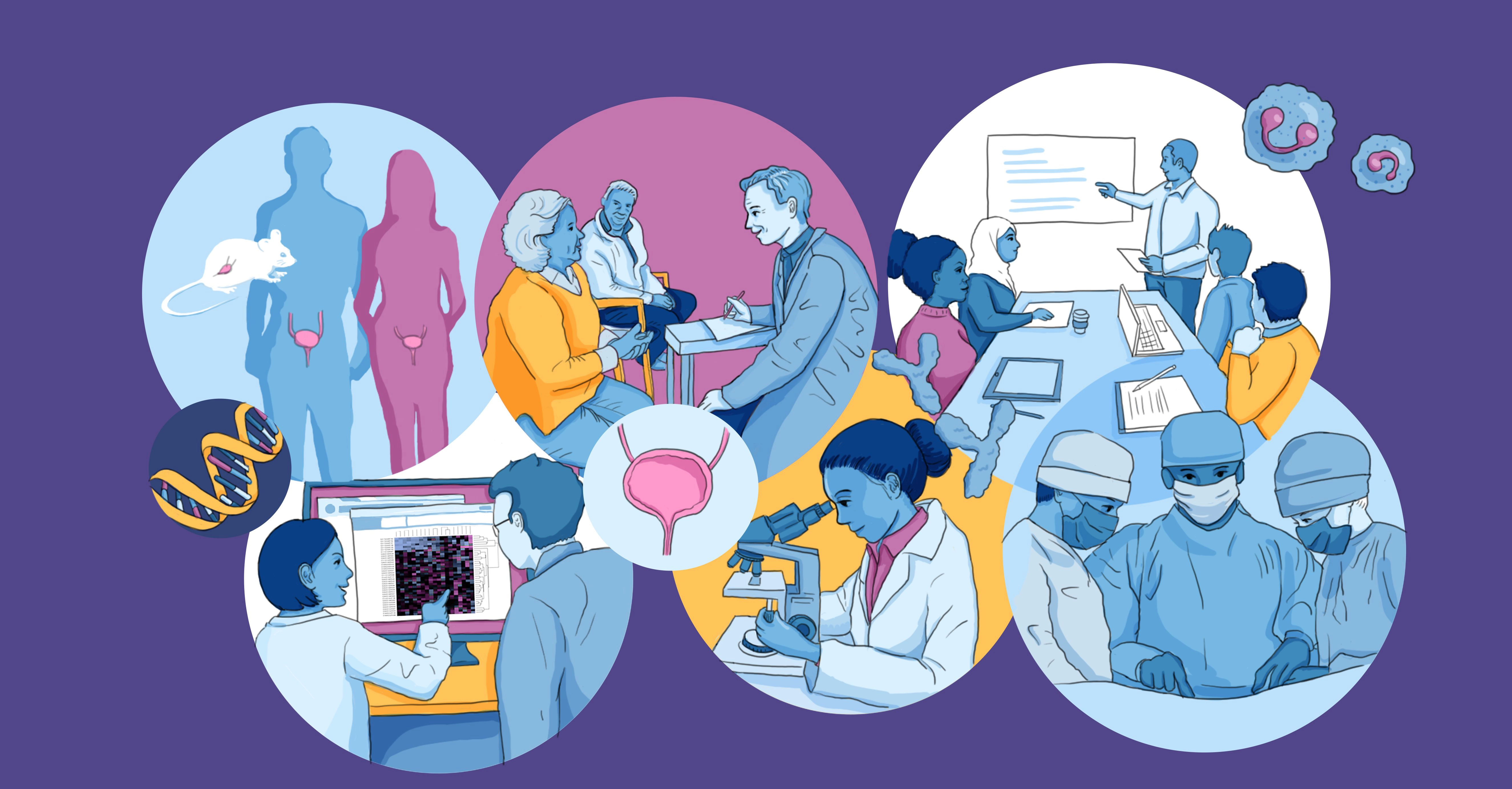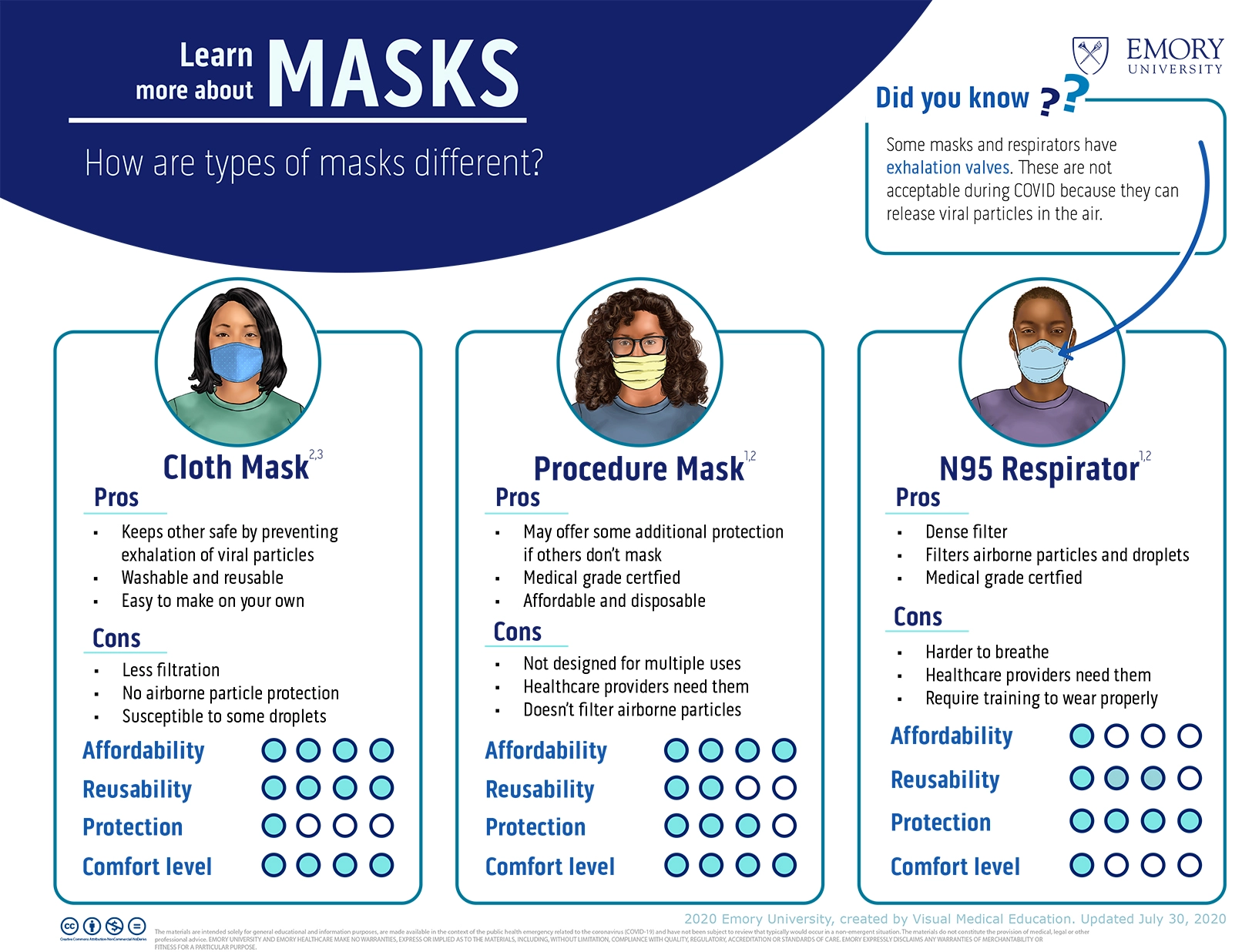While countries across the globe are becoming more ethnically and racially diverse, most medical illustrations today still represent the “standard” white, heterosexual men. We often still see the characterization of a typical human body as one that is young, thin, attractive, able-bodied, and cisgender. With the clamor for diversity and inclusivity in medical illustrations getting stronger, it is about time we replace outdated medical images with more inclusive and diversity-conscious ones. In this article, we present an example of our work, “Learn About Masks”, to demonstrate how diversity-conscious illustration can facilitate a more effective healthcare communication.
The Need for Diversity-Conscious Medical Illustration
When you look at anatomy textbook illustrations and images used in various health media, you will realize that medical illustrations, unfortunately, have yet to manifest diversity. This has led to several problems including social biases and substandard health care for marginalized groups.
Racial bias in healthcare has been linked with a range of negative outcome for darker-skinned population. Dermatologists, for instance, have very few resources in identifying skin problems for darker populations. This hinders them from providing optimum care appropriate to the specific needs of people with darker skin. Unfortunately, darker-skinned patients are likely to experience severe skin cancer to be undiagnosed.
Gender bias has also led to misdiagnosis and unnecessary accidents for women. One article states that women are 50% more likely than men to be midiagnosised after heart attack, because most heart attack trial use data from men. Another article states that due to car design referencing mostly male, female are twice as likely to be trapped in a vehicle during collision.
Medical illustrations impact the way people view their bodies, and medical training is no exception. When these images portray a standard body type as normal, anything that veers away from it is positioned as abnormal. This creates stereotypes and social biases that lead to how patients from different background is treated in doctor’s office, ultimately affecting the lives of those who do not fit the norm.
For instance, one research shows the frequent underdosing of obese patients who were prescribed antibiotics. Another article states that anatomy/physiology books fail to give accurate, inclusive knowledge about LGBTQIA+ people, potentially leading to members of the community experiencing health disparities.
This form of healthcare inequity could be alleviated through the use of diverse medical illustrations during medical training. It would help widen the knowledge of healthcare providers by making them aware of how various symptoms appear on different people, thereby improving the quality of care each person receives regardless of their identity and cultural background.
How Diversity-Conscious Medical Illustrations Deliver a Stronger Message

imagery with diversity created for Josh Meeks Laboratory at the Northwestern University Feinberg School of Medicine © Josh Meeks 2020
Health is universal. Every person must feel valued and respected in any healthcare environment regardless of their ethnicity, gender identity, or socioeconomic status. Medical illustrations that embrace diversity help foster such environments and deliver stronger messages.
When we enter a medical facility and see posters of patients with diverse bodies and skin tones, we feel safer and more relaxed. We neither feel excluded, belittled, or in danger of being discriminated against for not fitting the “norm” exemplified in traditional cisgendered illustrations. Instead, we feel more accepted and are thus more receptive to the message the content are trying to convey. The same goes for infographics, reading materials, brochures, and other media where medical illustrations show diversity and inclusivity.
Diverse imagery creates a more personal, more emotional, connection with people. When we see an image we can relate to, we become more interested in it. We tend to be more eager to know what it is about. This kind of connection is key to getting information across a wider audience. In the health industry, it is essential in disseminating messages that impact the lives of people.
For healthcare brands, inclusive medical illustrations can help communicate how your company values people as unique individuals. Diversity in healthcare provide assurance that there’s no discrimination against anyone regardless of whether they fit the “standard” mold or not, thus creating a sense of safety and security for everyone. They help enhance engagement and build loyalty by creating a positive impact on patients, providers, and practitioners. All of these enable you to differentiate your brand from others.
As medical illustrations become more diversity-conscious, we can expect better quality of healthcare services for all people. Such illustrations communicate respect and uplift the dignity of every person especially those in the minority. Ultimately, they become instrumental in getting the right message to the people who need to hear them.
Making Inclusive Medical Illustrations Work

A page in Learm About Masks, © Emory University 2020
Understanding the need to be more inclusive, we took great care in designing the printable PDFs, Learn About Masks, created for the Emory University School of Medicine. These materials were intended to educate healthcare professionals on how to safely reuse personal protective equipment during times of shortage.
At that time, the pandemic had just started and there was massive shortage of PPE in hospitals and health care facilities worldwide. There was also escalating divisiveness among races as some were perceived to have been causing the rapid spread of the virus. This was the time when Black Lives Matter and Asian hate showed heightened conflicts due to race.
To avoid exacerbating the racial division, we included various races in the illustrations for Learn About Masks. Black, Hispanics, and Asians were shown wearing masks properly to help raise a more positive impressions toward minorities and oppressed races. The racial diversity evident in its medical illustrations also emphasized the need for the entire world to stand together in battling the pandemic. The content received good traction in the health sector, as it empowered people who felt included when they saw the piece we made. One of the extended series How Masks Work became so popular that it even got translated to Spanish and was deemed the signature piece in the COVID-PPE portfolio of Emory. Soon, we were requested to expand the library and eventually published more diversity-conscious resources, including videos and apps. This goes to show that incorporating inclusivity and diversity in medical illustrations helps deliver strong messages to a wider audience.
Impactful Illustrations Help Save Lives
In the health industry, getting the right message to as many people as possible can help save more lives. So, medical illustrations must be designed to have maximum positive impact on those who see them. Trained medical illustrators like us are more than capable of creating engaging content that empowers patients and healthcare providers to make better healthcare-related decisions. Our understanding of the industry and society at large enables us to make evocative and impactful illustrations that spur people to take actions appropriate to circumstances.
With trained medical illustrators, you can add more value to your health care services and deliver stronger messages to a wider audience. To know more about how you can optimize engagement with your patients and healthcare workers, visit Mao Miyamoto Medical Media, Inc. at http://maomiyamoto.com/.
